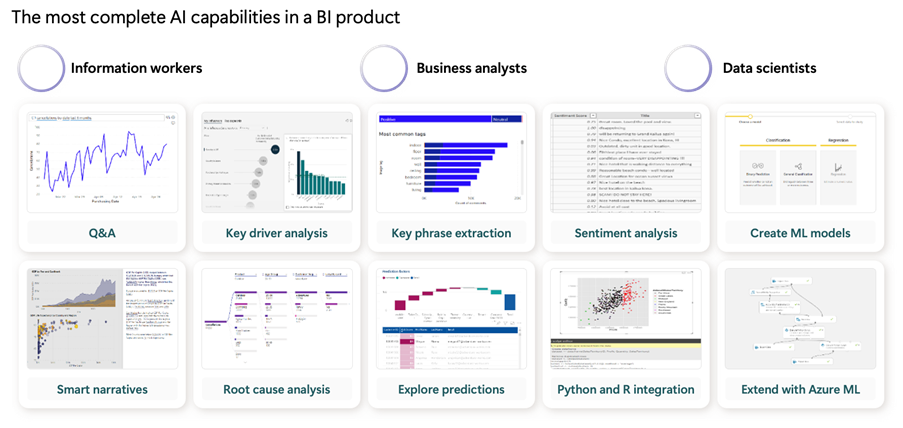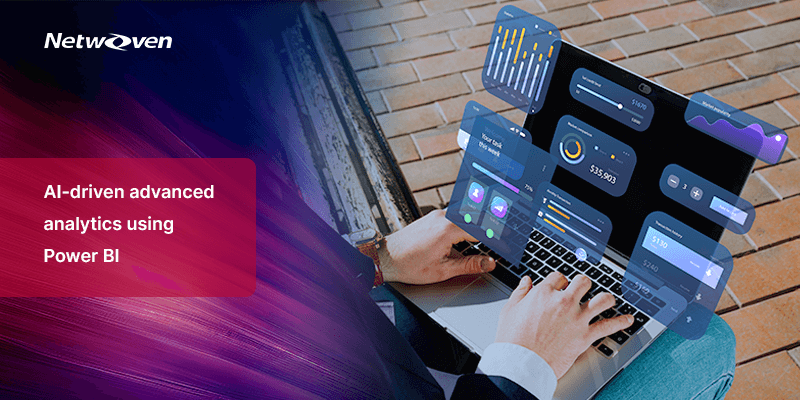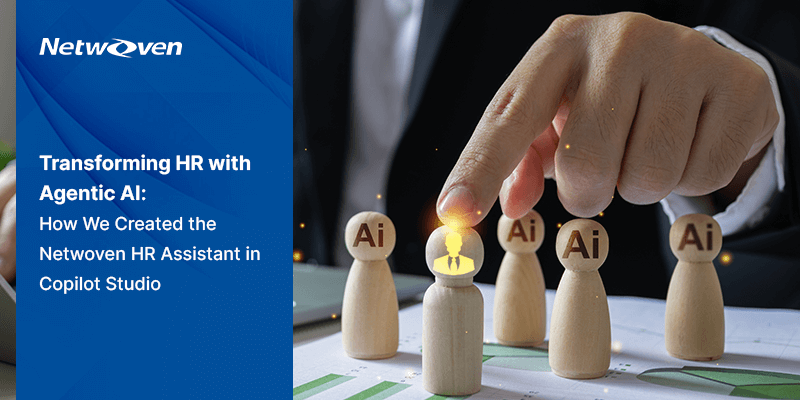This article aims to provide a comprehensive overview for business professionals and data analysts looking to extend Power BI’s analytics capabilities using AI.
Introduction to AI-Driven Analytics
AI-Driven Advanced Analytics is a combination of AI and advanced analytics techniques, such as machine learning and predictive analytics. This technology enables organizations to uncover insights and patterns in data that were previously hidden, delivering faster, deeper, and more accurate insights that can drive business value. It empowers businesses to analyze substantial amounts of data at a fast pace and with increased accuracy.
Benefits of AI and AI-Driven Analytics?
Increased Accuracy
AI-Driven Advanced Analytics provides an enhanced level of accuracy in data analysis, enabling organizations to make informed decisions with greater confidence.
Faster Insights
The use of AI and advanced analytics enables organizations to gain insights faster, reducing the time to analyze data and make informed decisions.
Improved Decision-Making
AI-Driven Advanced Analytics provides organizations with the ability to make better decisions by providing insights that are timely, accurate, and relevant.
By leveraging the power of AI and advanced analytics, organizations can gain a competitive advantage and drive innovation.
AI and Power BI
Here’s how AI-driven analytics can be used within Power BI.
AI Visualizations
Power BI provides built-in AI visualizations such as:
- Key Influencers: Analyses data to identify the factors that influence a particular outcome.
- Decomposition Tree: Breaks down metrics like sales or revenue into its components to identify the most significant contributors.
- Q&A: Allows users to ask questions in natural language and Power BI responds with the best-fit visualization or data insights.
Integrating Azure AI & ML Models
You can integrate AI and machine learning models created in Azure Machine Learning directly into Power BI. This allows businesses to make predictive analytics part of their reporting, enabling features such as:
- Predictive forecasting (e.g., sales forecasting)
- Customer segmentation using clustering models
- Classification tasks (e.g., fraud detection)
- Regression analysis to predict continuous variables (e.g., future costs)
AutoML in Power BI
Power BI also integrates with AutoML (Automated Machine Learning) in Azure, which simplifies the process of building machine learning models. This helps users with limited data science expertise build models such as:
- Classification models for customer behavior
- Regression models for predicting prices
- Time-series forecasting models
The AutoML feature can be accessed from Power BI when connected to Azure Dataflows.
Cognitive Services Integration
You can use Azure Cognitive Services in Power BI for tasks such as:
- Text analytics: Extract key phrases, sentiments, or entities from large volumes of text data (e.g., customer feedback).
- Computer Vision: Analyse images within reports to extract information, detect objects, or even categorize content.
- Language Understanding (LUIS): Add natural language processing to interpret user questions and provide more contextually relevant insights.
Power BI Dataflows & Data Preparation
Power BI allows you to build dataflows that can automate the preparation of large datasets. Using Power Query and AI insights, users can automate data cleaning and apply advanced AI functions like:
- Anomaly Detection: Automatically identifies outliers in datasets.
- Entity Detection: Recognizes specific types of information such as people, organizations, or products.
Advanced Analytics with Python & R
Power BI supports integration with Python and R scripts, enabling data scientists and analysts to run custom AI and machine learning models within Power BI reports. This integration allows for:
- Visualization of complex data relationships
- Application of custom statistical models
Use of advanced machine learning libraries like scikit-learn and TensorFlow in Power BI
Time Series Forecasting
Power BI also has native support for time-series forecasting. By adding a forecast to a line chart, you can predict future values based on historical data. This feature is enhanced when paired with AI insights for more sophisticated forecasting.
Typical Use Cases of AI-Driven Analytics in Power BI
- Sales Forecasting: Use historical data to predict future sales trends and plan marketing efforts accordingly.
- Customer Segmentation: Apply clustering algorithms to group customers based on purchasing behavior, demographics, or other factors.
- Fraud Detection: Use anomaly detection to spot unusual transactions or activities that may indicate fraud.
Employee Attrition Analysis: Predict which employees are likely to leave based on historical data and key indicators such as job satisfaction, performance, and tenure
By leveraging AI in Power BI, organizations can drive better decision-making through automation, advanced insights, and more precise forecasting.
Analytics for all
Power BI includes AI-powered analytics available for information workers, business analysts, and data scientists. The users can use the functions for Text Analytics and Vision provided by Azure Cognitive Services. There are custom functions available in Power BI from Azure Machine Learning.

Watch the webinar- Power BI: More than Just Visuals
Conclusion
At Netwoven, we have been at the forefront of Data and Analytics for decades, helping businesses leverage AI-powered capabilities in Power BI to drive smarter decision-making and innovation. Whether you are looking to enhance your reporting with predictive models or implement advanced machine learning solutions, our team has the expertise to guide you every step of the way.
Interested in learning more? Contact us today to discover how AI-driven analytics can transform your business.























